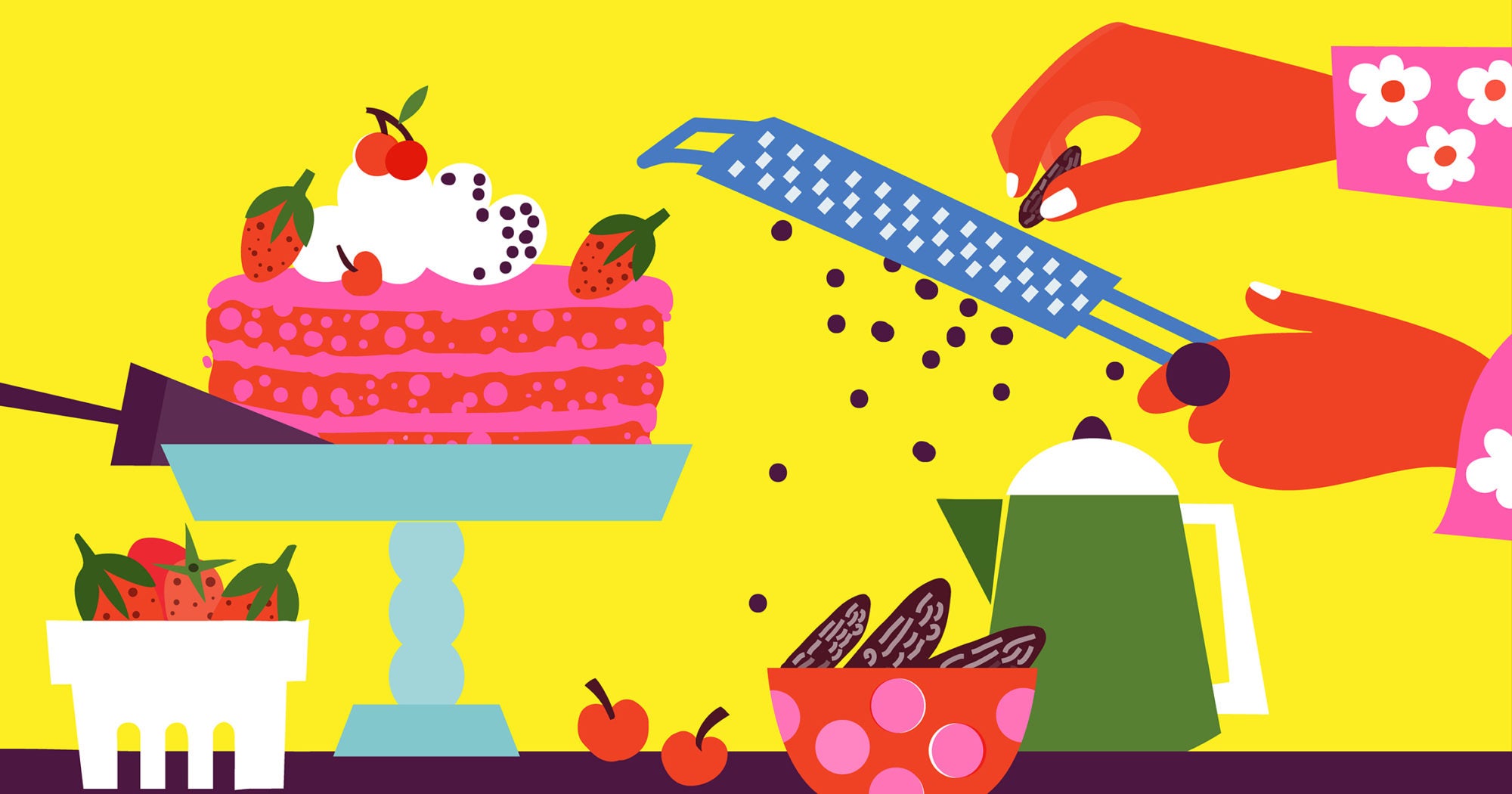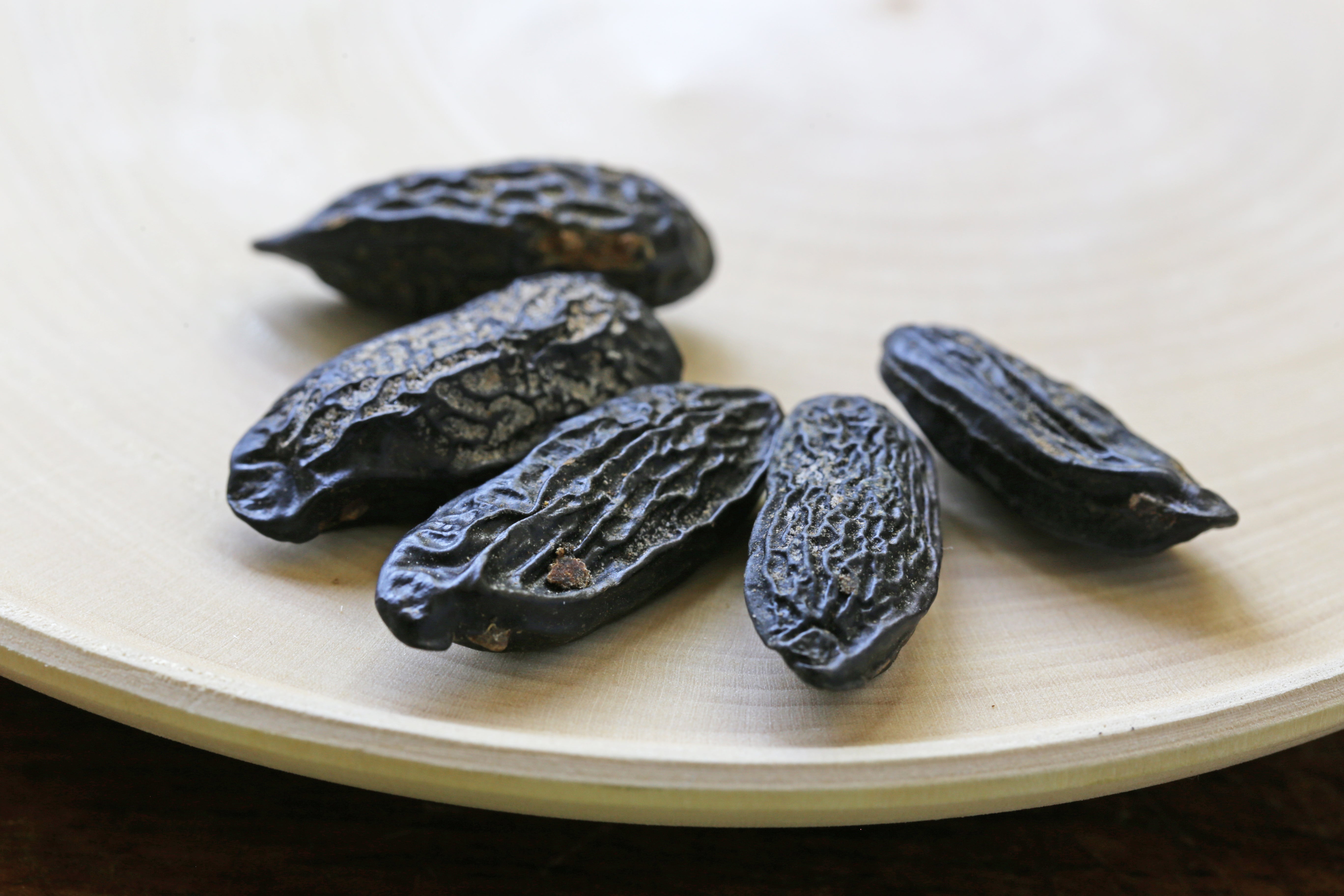
Tonka beans have been used for centuries in Latin American cooking. So why are they illegal in the U.S., and where can you get them?
“Yes, we have it, but we won’t discuss it,” the employee said before hurriedly ending the conversation. No surprise. That is the hazard, and allure, of an illegal ingredient.
I had called a spice shop in New York City that purportedly sells tonka beans, a seed grown in Central and South America. These elusive beans also happen to be illegal to buy or sell, complicating my search for them.
Over the years, the U.S. Food and Drug Administration has banned plenty of foods that are commonplace and widely accepted as safe to eat in other countries. Mangosteens, a Southeast Asian fruit, were banned until 2007 because of fears of infestations of an Asian fruit fly. Absinthe was banned for a century—partially because it contains thujone, a toxic chemical also found in sage, but mostly because society started believing the wormwood in absinthe induced madness. Sassafras oil, which occurs naturally in basil and used to be in root beer and tea, is a carcinogen and thus illegal to buy as its own product.
In some cases, the illegality has even built some intrigue around ingredients. Take Sichuan peppercorns, banned in 1968 due to worries of them carrying a citrus blight. The Spice House, with stores in Chicago and Milwaukee, started carrying Sichuan peppercorns when the popular China Moon Cookbook came out in 1992, says owner Patty Erd. In 2003, the FDA came knocking at the Spice House.
“The FDA came into our store with guns—I mean guns in their holsters like it was a drug raid—and said, ‘We need all your Sichuan peppercorns.’ We’re like, ‘What?’” Erd recalls, laughing. One store manager called another store location to warn of the peppercorn raid, and extra inventory was hidden away in the basement. After they became legal in 2005, customers came to the Spice House “like you wouldn’t believe,” she says.

Tonka beans—an ingredient that people have used for centuries to add a vanilla-almond note to cakes, custards, ice creams, and even chicken—have been illegal since 1954 because they contain coumarin, a chemical compound found in cinnamon. Large doses (about 30 beans’ worth) can cause liver failure, but in most tonka-laced dishes, a person doesn’t consume more than one bean.
In spite of the fact that it’s illegal to import or sell tonka beans in the U.S., they can still be found in certain corners of the Internet and in a few specialty stores, and the legality hasn’t stopped chefs around the country from experimenting with them.
Recently, I ordered a pack of 50 beans on Amazon from a product page with zero reviews, which felt slightly illicit. The package arrived from Venezuela, and I opened the bag to smell the black, shriveled beans in the shape of elongated almonds. The aroma is a sweet cross between vanilla and almond, a satisfying smell that packs more strength than you would expect from a paper-clip-sized seed. My law-abiding husband seemed anxious. “You’re never going to use 50 of them, unless you want to kill somebody,” he said, unable to forget the coumarin.
Neither can people who cook with tonka beans traditionally. Felix Padilla lives in Trinidad and Tobago, just off the coast of Venezuela, and blogs at Trinidadian food website Simply Trini Cooking. He eats a maximum of one tonka bean per day.
“It’s not a fruit you could eat like mango,” he says. Padilla picks tonka beans from cumaru trees that grow near his home. In addition to eating them fresh, he says traditional Trinidadian cuisine uses dried tonka beans in sweet breads and chocolate. The U.S. only receives dried beans, which are grated into recipes; one seed is usually plenty. An easy way to use tonka beans is to switch them out with vanilla extract in a dish.
“I don’t think it’s that much of an issue with whether people use it or how they use it because we have been using it traditionally, and I never heard of anyone dying from using tonka beans in their recipes,” Padilla says.
Anna Markow, pastry chef at Esca restaurant in New York City and frequent user of tonka beans, says some U.S. restaurants use them as a secret ingredient.
“They really aren’t any more harmful than a large dose of cinnamon to people with specific conditions,” she says. “[Banning them] keeps ingredients obscure and somewhat exotic. People just don’t hear about it unless they go looking.”
Markow keeps tonka beans in her spice collection, using them subtly in the same way as vanilla in desserts with pear, apple or winter root vegetables such as parsnips and rutabaga.
“It just adds a nice, kind of nutty, sweet note to things,” she says.
I follow Padilla’s advice and incorporate tonka bean into coconut bread. The tonka beans add a touch of almond, more complex than vanilla extract. My husband’s apprehension melts once he smells it baking, devouring more than one slice.